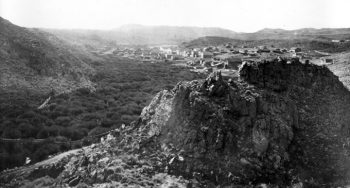Historic Wyoming Gold Mines Today
Wyoming Gold Mines
 Gold does not have a strong association with Wyoming. As a matter of fact, most people will think about cattle or oil when they are talking about the state. Compared to its neighboring states, Wyoming gets very little attention as far as gold mining is concerned. Population density is also lower than any other state, so it makes sense that gold exploration is not too popular here. Despite all of that, a good amount of gold has been recovered although not as much as from other states. Wyoming gold mines have never had their best season yet due to the nature of the state’s long and unfriendly winters.
Gold does not have a strong association with Wyoming. As a matter of fact, most people will think about cattle or oil when they are talking about the state. Compared to its neighboring states, Wyoming gets very little attention as far as gold mining is concerned. Population density is also lower than any other state, so it makes sense that gold exploration is not too popular here. Despite all of that, a good amount of gold has been recovered although not as much as from other states. Wyoming gold mines have never had their best season yet due to the nature of the state’s long and unfriendly winters.
In the present-day Fremont County, more precisely at the South Pass-Atlantic City, gold was discovered in 1842. For about 15 years, placers in the area were explored albeit intermittently. Many towns surrounding the areas transformed to cater to the miners. By 1860’s, the state saw an increase in prospecting efforts. Many Wyoming gold mines were soon established including:
- South Pass-Atlantic City District: located in the southern edge of Wind River Range, the area has produced placer gold. Official production record showed poor recovery, but some people believe that the actual production was more than the amount reported. By 1875, this area was pretty much deserted but some miners still worked here intermittently. Total gold production was around 300,000 troy ounces (9.3 tons). After about 300 years of poor gold production, the area became an iron mine.
- Granite Mountain Range: many Wyoming gold mines were established in this area such as Tin Cup, Seminoe, and Rattlesnake Hills Districts. Again, those mines had poor gold recovery records; low grade gold ores were the main commodities. There have been some investigations suggesting that gold exists, but the amount is only financially plausible for recreational prospectors.
- Absaroka Mountains: gold has been recovered from several areas for examples Stinking Water, New World, and Sunlight Districts. Most recoveries were done by traditional methods such as dredging, sluicing, and panning. These areas do not attract commercial gold mining companies, but recreational prospectors have a good chance of finding gold here.
Wyoming is a relatively remote state in the country, so perhaps you need extra preparations and gear to do your gold prospecting activities. Be sure to buy a good Wyoming gold map to avoid claim jumping. A wide area of public lands are open for mineral exploration, which means you don’t need special permits to start your venture. The lack of commercial gold mining activity can be a good thing, but there is also the possibility that you don’t have any clue where to start. Best places are those areas with historical discoveries before you explore further.



